Learn how to create a wireframe shader using barycentric coordinates and geometry scripting.
So you want to make a fancy wireframe material so you do some internet searching. Maybe you come across Cat Like Coding’s excellent tutorial on the subject for unity:
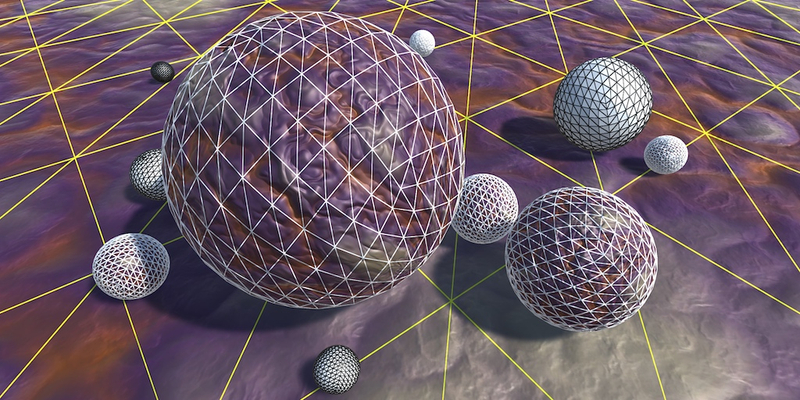
But you aren’t using Unity, you are using Unreal, and at the time of this post, we don’t have access to geometry shaders easily.
Luckily we recently have a new(ish) tool that is almost as good. Geometry Scripting.
The crux of Cat Like Coding’s tutorial is that we need to get the Barycentric Coordinates for each triangle into the pixel shader. Just like them, we are going to put these into a texture coordinate. Unlike them, we are going to make a tool to do this in the editor instead of having a geometry shader do it at runtime.
You could go do the same thing in your content tool, like Maya or Blender, but that isn’t fun. What is fun is doing it in the editor in a right-click menu.
Learn how to make your own below, or get my version from my github.
Create an Asset Action
First you need to create an asset action, make sure it is an Editor Utility Blueprint by creating it through the submenu.

Override the GetSupportedClass function and set it to only return StaticMesh.
We are going to make two new functions. The exposed function Add Barycentric UVs, and an internal function AddBarycentricUVs_Internal.
Add Barycentric UVs
This function will be exposed to the right-click menu on static meshes, so give it a good description. Because we want the user to be able to change which UV Set the barycentric uvs will be added to, make sure you also add an integer input value named Target UV Set.
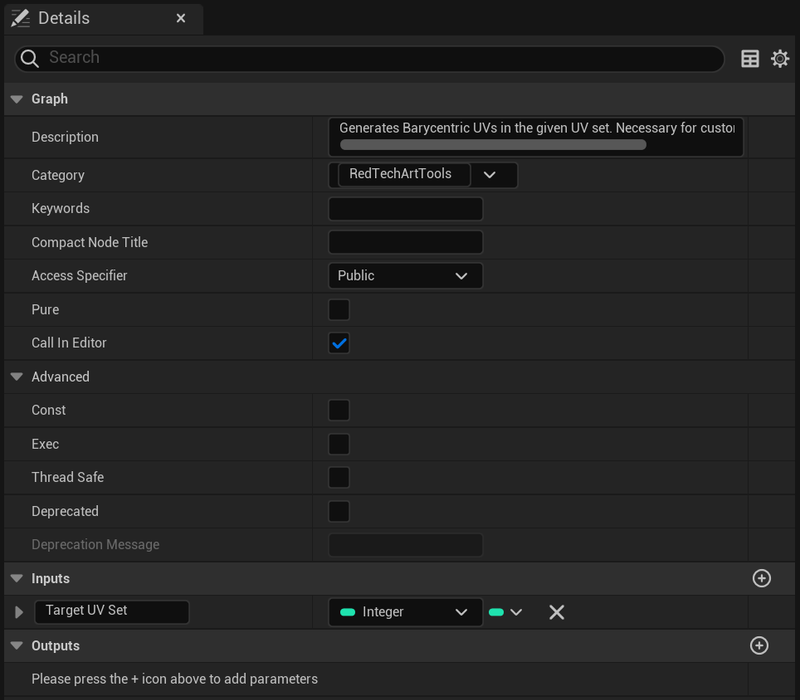
The function itself is pretty simple, it simply gets the selected assets, loops over them and gets all the Static Mesh assets in the selection set, and calls the internal function on them.

Add Barycentric UVs | Click here to get this graph.
AddBarycentricUVs_Internal
This function does all the heavy lifting. But the premise is pretty straight forward.
- For each LOD of the selected mesh:
- Copy the LOD into a Dynamic Mesh.
- Iterate over all the triangles in the Dynamic Mesh
- Set Each Triangle to have UVs of (0,0),(1,0),(0,1) [Order doesn’t matter for this.]
- Copy the Dynamic Mesh back into the LOD of the selected mesh.

Get the number of LODS, loop from 0 to 1-Number of Lods.
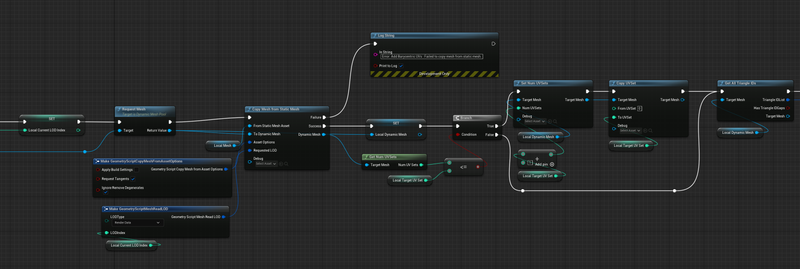
Request Dynamic Mesh from the Dynamic Mesh Pool. Copy the LOD from the Static Mesh into the Dynamic Mesh. If the number of UVs is less than or equal to the target UV number then add a new UV set.
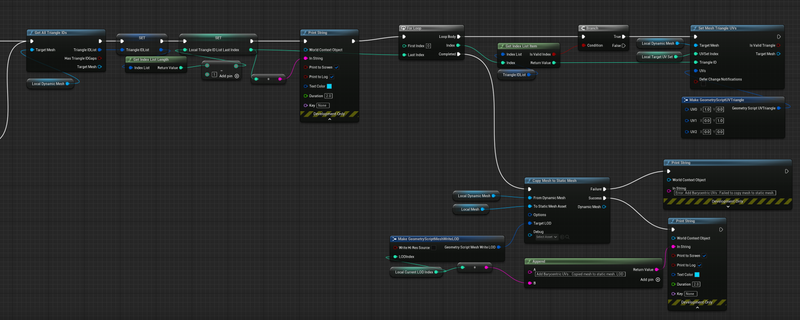
Get all the triangles in a triangle UV Set, store the (Length of the list -1) for another ForLoop.
For each ID: If the ID is valid, set the UVs to (1,0) (0,1) (0,0).
Once done, copy the dynamic mesh back into the static mesh.
AddBarycentricUVs_Internal | Click here to get this graph.
Custom Wireframe Material
To use these UVs to create a custom wireframe material, you have to understand the basics of Barycentric coordinates. In the simplest terms, the coordinates tell you how far you are from each vertex as a percentage. These coordinates always add up to one, so while we only have two of the coordinates interpolated into our UVs, we can find the third by doing 1.0 - X - Y
Once we have that, we can use smoothstep to remap these coordinates into a sharp wireframe.
Below is the material graph, and a transcription into HLSL which may be more readable to some.
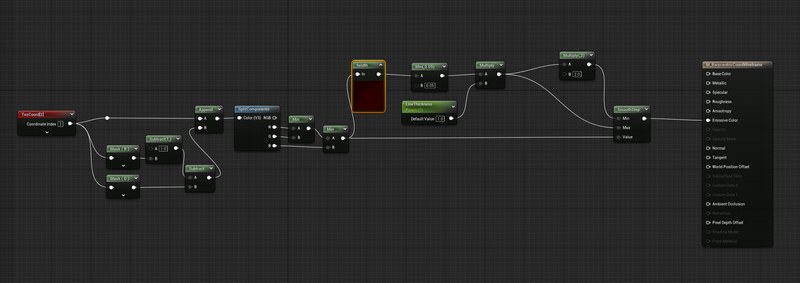
float LINE_THICKNESS = 2.0;
float MIN_THICKNESS = 0.05;
float3 baryCoords = float3(TexCoord[2], (1.0 - TexCoord[2].R - TexCoord[2].G)) ;
float baryCoordsMin = min(baryCoords.R, baryCoords.G, baryCoords.B);
float mask = min(fwidth(baryCoordsMin), MIN_THICKNESS) * LINE_THICKNESS;
float mask_min = mask * 2.0;
float emissive_color = smoothstep(mask_min, mask, baryCoordsMin);